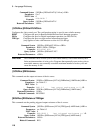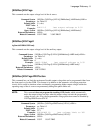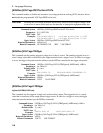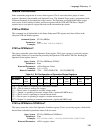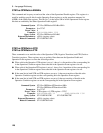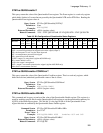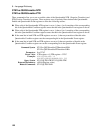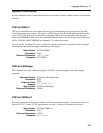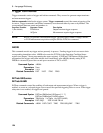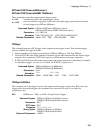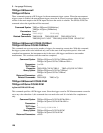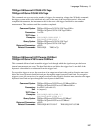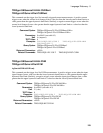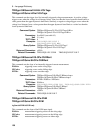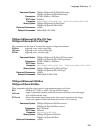
8 – Language Dictionary
124
Trigger Commands
Trigger commands consist of trigger and initiate commands. They are used to generate output transients
and measurement triggers.
Initiate commands initialize the trigger system. Trigger commands control the remote triggering of the
dc source. Trigger commands (and Initate commands) are referenced either by name or by number. The
correspondence between names and numbers is:
Sequence Number Sequence Name Description
1 (the default) TRANsient Output transient trigger sequence
2 ACQuire Measurement acquire trigger sequence
NOTE: Before you generate a measurement trigger, you must specify either a voltage, current ,
or DVM measurement acquisition using the SENSe:FUNCtion command.
ABORt
This command cancels any trigger actions presently in process. Pending trigger levels are reset to their
corresponding immediate values. ABORt also resets the WTG bit in the Operation Condition Status
register (see chapter 7 about programming the status registers). If INITiate:CONTinuous ON has been
programmed, the trigger subsystem initiates itself immediately after ABORt, thereby setting WTG.
ABORt is executed at power turn on and upon execution of *RCL or RST.
Command Syntax
ABORt
Parameters
None
Examples
ABOR
Related Commands
INIT *RST *TRG TRIG
INITiate:SEQuence
INITiate:NAME
INITiate commands control the enabling of both output and measurement triggers. When a trigger is
enabled, an event on a selected trigger source causes the specified triggering action to occur. If the trigger
subsystem is not enabled, all triggers are ignored.
Command Syntax
INITiate[:IMMediate]:SEQuence[ 1 | 2 ]
INITiate[:IMMediate]:NAME<name>
Parameters
TRANsient | ACQuire (for INIT:NAME )
Examples
INIT:SEQ2 INIT:NAME TRAN
Related Commands
ABOR INIT:CONT TRIG TRIG:SEQ:DEF *TRG



